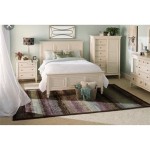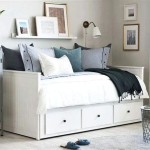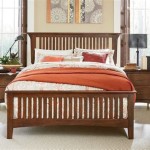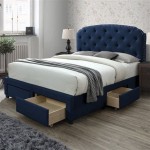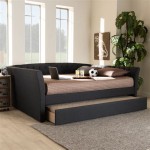How to Make a Headboard for a Queen Bed
A headboard is a crucial component of any bed, adding both visual appeal and functionality to the bedroom. Beyond simply providing support for pillows, a headboard can transform the look and feel of the space, setting the tone for the entire room. While ready-made headboards are readily available, crafting a custom headboard offers an opportunity to express personal style and create a truly unique piece. This guide provides a comprehensive overview of how to make a headboard for a queen bed, covering essential steps and considerations for a successful project.
Step 1: Planning Your Headboard
Before embarking on the construction, careful planning is crucial. This initial stage involves determining the design, materials, and dimensions of the headboard.
**Design:** There are countless headboard design options to suit diverse aesthetic preferences. From simple and minimalist to intricate and ornate, the choice depends on the overall style of the bedroom. Consider the height, width, and shape of the headboard. Popular options include rectangular, curved, or even upholstered headboards with fabric panels.
**Materials:** Choosing the right materials is essential for achieving the desired look and ensuring durability. Wood, metal, and upholstered panels are common options.
**Dimensions:** The dimensions of the headboard are determined by the size of the bed and the desired aesthetic. Queen-sized beds generally require a headboard that is 60 inches wide and 40-50 inches tall. The height should be chosen based on personal preference and the overall proportions of the bed frame.
Step 2: Gathering Materials and Tools
Once the design, materials, and dimensions are finalized, gather the necessary tools and supplies.
**Wood:** For wooden headboards, select sturdy wood like pine, oak, or maple. The specific wood type will depend on the desired look and budget.
**Metal:** Metal headboards can utilize steel, iron, or aluminum. These materials offer a modern and industrial aesthetic.
**Fabric:** If opting for an upholstered headboard, choose durable fabrics like velvet, linen, or cotton.
**Tools:** Essential tools include a saw, drill, screwdriver, measuring tape, level, and sandpaper. Additional tools may be required depending on the specific design and materials chosen.
Step 3: Building the Frame
The frame is the foundation of the headboard, providing structural support for the chosen materials.
**Wood Frames:** Wood frames can be constructed using pre-cut lumber or by cutting and joining individual pieces. Begin by measuring and cutting the side rails, top rail, and bottom rail to the desired dimensions. Join these pieces using wood glue and screws for a strong and durable frame.
**Metal Frames:** Metal frames are often constructed by welding or riveting individual pieces of metal tubing.
**Upholstered Headboard Frames:** Upholstered headboards typically require a plywood or MDF frame. This frame provides a base for attaching fabric panels and padding.
Step 4: Adding Finishing Touches
After completing the frame, the headboard is ready for finishing touches.
**Wood Headboards:** Sand the surface of the wood frame to achieve a smooth finish. Apply wood primer and paint or stain to the desired color.
**Metal Headboards:** Sand the metal frame to remove any sharp edges and rust. Apply a primer and paint or powder coat the metal to achieve the desired finish.
**Upholstered Headboards:** Attach the fabric panels to the frame using staples or upholstery tacks. Add padding for increased comfort and visual appeal.
Step 5: Installing the Headboard
Once completed, the headboard is ready for installation.
**Mounting Methods:** Headboards can be mounted to the wall or attached to the bed frame.
**Wall Mounting:** Use strong brackets and anchors to securely mount the headboard to the wall.
**Bed Frame Attachment:** Some bed frames have built-in headboard brackets. If not, attach brackets to the headboard and bed frame using screws or bolts.
Step 6: Finishing Touches and Maintenance
The final step involves adding any additional embellishments and ensuring proper maintenance.
**Embellishments:** Consider adding decorative elements to enhance the headboard's visual appeal. This can include molding, trim, or even custom-made artwork.
**Maintenance:** Regular cleaning and maintenance are essential to preserve the headboard's appearance and durability. Use appropriate cleaning solutions depending on the materials used.
Creating a custom headboard for a queen bed requires careful planning, attention to detail, and a willingness to experiment. By following these steps and considering individual preferences, anyone can craft a unique and functional headboard that complements the bedroom's decor and reflects personal style.

Easy Build Wood Headboard All Mattress Sizes Ana White

Diy Bed Frame Wood Headboard 1500 Look For 200 A Piece Of Rainbow

Diy Upholstered Wingback Headboard Handmade Weekly

How To Upholster A Headboard For Beginners

15 Diy Headboard Ideas How To Make A

Diy Wooden Headboard With Shelves Bed Wood

15 Diy Headboard Ideas How To Make A

Diy Upholstered Headboard Anyone Can Make Somewhat Simple

10 Stunning Wood Slat Headboard Ideas

50 Best Diy Headboard Ideas Upcycled



